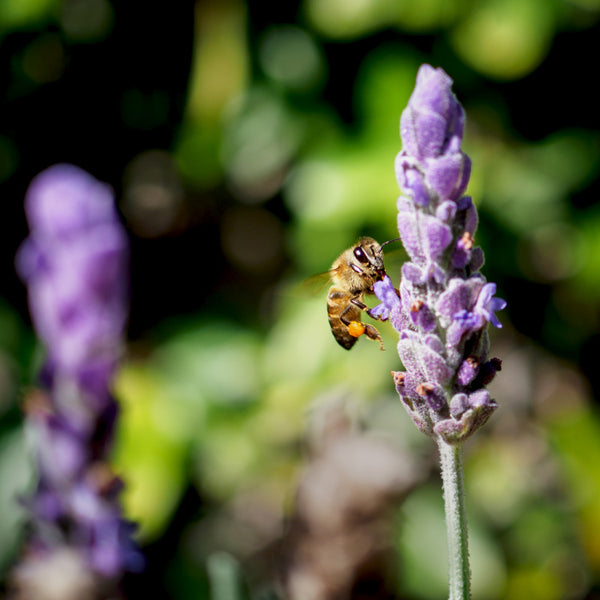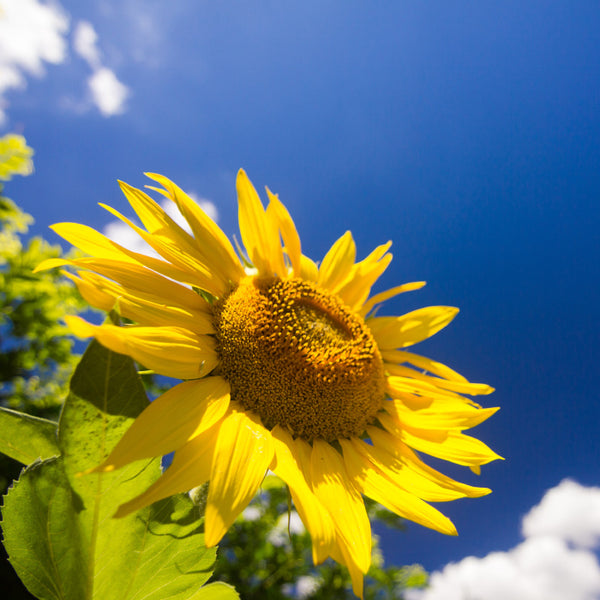Spring has come and gone, and you probably have your garden prepped and ready for the summer. After all the hours spent planting and sowing seeds, you most likely noticed plenty of insects and bees buzzing around.
Many of us were taught to stay away from bees as kids. But as gardeners, we know that bees are essential to growing robust, healthy gardens.
Bees are the most common pollinators, meaning they spread pollen when they travel between flowers. This process is essential to growing some of our favorite foods, like cucumbers and pumpkins.
If you’re seeing fewer bees in your garden year after year, you’re not alone. Honey bee populations have been collapsing at an alarming rate in the past few years. Scientists don’t know exactly why the collapse was so sudden, but they do know the parasitic mite Varroa destructor and pesticides are two of the biggest reasons.
Scientists and farmers alike are scared by the drastic collapse of honey bee populations. Not only are bees essential to create honey, but they are also responsible for growing some of our most important (and beloved) foods, like almonds, avocados, and blueberries.
What can bees do for my garden?
When bees go between flowers to feed on nectar, they also transfer pollen from plant to plant. This process, called pollination, is essential to growing robust, healthy foods in our gardens.

Grow more robust, healthier fruits and vegetables
Some common garden plants – like cucumbers, zucchini, and pumpkins– need pollination to grow fruit. They have male and female plants, and in order to reproduce (or grow fruit), these plants need bees to transfer pollen from the male flower to the female flower. Cucumbers may still grow even when it’s only partially pollinated. But partial pollination stunts growth, so your fruit may be smaller than expected. Full pollination, on the other hand, produces larger fruits. When bees move from flower to flower, they simultaneously feed on nectar and pollinate your plants. Bees and humans both rely on the plants, and each other, to survive.
Increase yield for self-fertile foods
Other plants – like tomatoes and peppers – are self-pollinating. Each flower has male and female reproductive parts, so they can grow fruit without pollination. But with bees, these plants grow more fruits and increase your yield.
Bees and other pollinators transfer pollen between flowers in your garden in a process called cross-pollination. Cross-pollination creates greater genetic diversity and improves the quality of seeds. This means that your future plants will have greater disease resistance and higher productivity.
Protect your garden from pests
Creating a bee-friendly garden can help you eliminate pesticides. If you grow tomatoes, peppers, or potatoes, you’ve probably dealt with hornworms. Hornworms are a common garden pest species that feed on the foliage and fruits of various plants.

Hornworms are tough to spot. Make sure to look out for spotty and chewed leaves, white cocoons, or wilted leaves to see if your garden is infested. There are various options to eliminate hornworms, from handpicking to insecticide. But if you’re like us, insecticides and pesticides are a no-go for our garden.
The solution? Bees!
Pollinators fly around, hunt, and help to control harmful garden pests. Not only do you get rid of pests, but you eliminate the use of harmful pesticides and insecticides. That’s an obvious win-win for us.
But pollinators need your help
Bees and other pollinators contribute so much to our lives. From more robust gardens to our daily cup of coffee, bees are essential to our food ecosystem. Despite their incredible work, bee populations are currently in decline.
With everything bees do for us, it’s our turn to give back.
We may not be able to solve the bee problem, but our individual choices still matter. As homesteaders, we can choose bee-friendly flowers, group the same plants together, and eliminate the use of pesticides.
Why Are Honey Bees at Risk?
Honeybees are dying at an increasing rate. In 2019 alone, around 40 percent of the honey bee population collapsed.
There are many reasons that contribute to colony collapse, including climate change, decreasing crop diversity, habitat loss, and viruses. Extreme weather and rising temperatures make it harder for bees to navigate ecosystems.
Rising temperatures also give rise to parasite populations, including the Varroa destructor. As its name implies, Varroa destructors infest honey bee hives and kill worker bees. Without worker bees, honey bee hives make less honey, and the entire colony can collapse and die within just a few seasons.
How to plant a bee-friendly garden
The bee problem is pressing. Fortunately, you can take action to save the bees right in your backyard.

Choose the right flowers and plants for your garden and backyard. Planting bee-friendly flowers is not only beautiful, but it helps bees thrive. Choose flowers like lavenders, sunflowers, chives, and zinnias for your garden. Not only are these flowers vibrant and colorful additions to your backyard garden, but they also attract bees and promote cross-pollination.
If you have a lawn, skip mowing and let the grass grow. Dandelions, milkweed, clovers, and other flowering weeds are actually beneficial for the ecosystem. When you skip mowing the lawn, you create more food sources for bees and do your part to save the bees.
Finally, don’t use pesticides, herbicides, or other chemicals in your garden. Neonicotinoids, the most popular class of pesticides, are a leading suspect in the disappearing bee population. These same chemicals are found in pesticides and insecticides at home garden centers and nurseries.
When you eliminate pesticides, you create a healthier garden both for yourself and pollinators. Organic gardens also promise healthier, more natural foods. When you stop using pesticides, you know exactly what is in the food you eat. It also stops chemicals from making their way into our water and soil resources.
You can also use Perpetual Pollen’s Everbee solution in your yard to combat the honey bee’s most existential threat, the Varroa mite. It’s the first science-back consumer product to help save the bees and launches soon.


 Jul 08, 2021
Jul 08, 2021 Posted by: Joe Farrell
Posted by: Joe Farrell